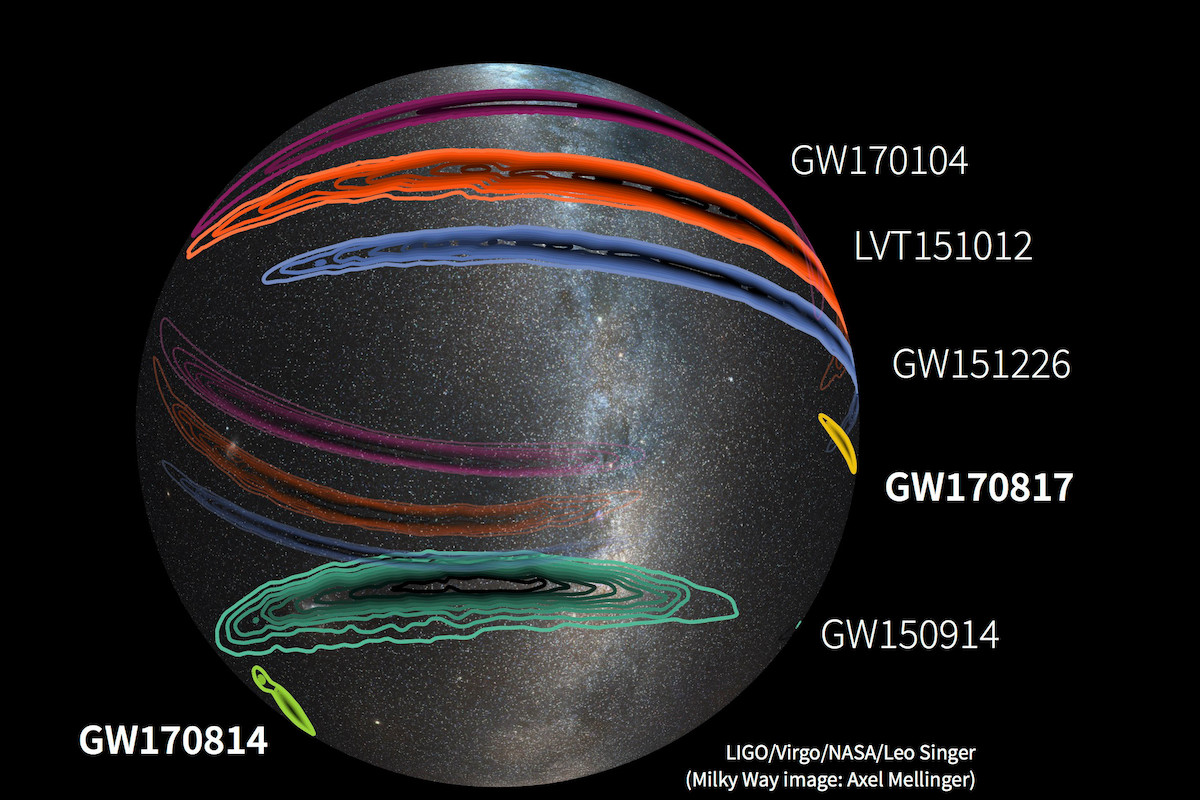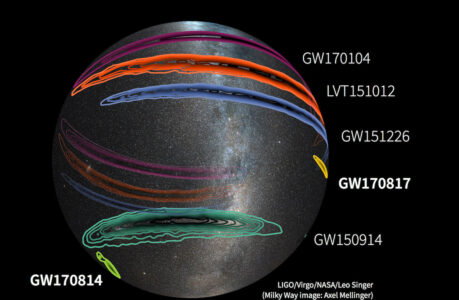The universe is filled with mysteries that continue to intrigue and challenge scientists around the world. One of the most exciting recent discoveries is that of gravitational waves, which are ripples in the fabric of spacetime itself. These waves are produced by some of the most violent events in the universe, such as the collision of black holes or the explosion of supernovae. But how exactly do these waves work, and what can they teach us about the cosmos?
First predicted by Albert Einstein in 1916 as a consequence of his theory of general relativity, gravitational waves remained elusive for over a century. It wasn’t until 2015 that the Laser Interferometer Gravitational-Wave Observatory (LIGO) made the first direct detection of these waves, confirming Einstein’s theory and opening up a whole new field of astronomy.
Gravitational waves are incredibly difficult to detect because they are incredibly small. They cause the fabric of spacetime to stretch and compress by tiny amounts, on the order of one thousandth the width of a proton. To detect these waves, scientists use incredibly precise instruments called interferometers that are able to measure these tiny changes in spacetime.
The discovery of gravitational waves has already revolutionized our understanding of the universe. For one, it has allowed scientists to study black holes and other exotic objects that were previously invisible to traditional telescopes. By studying the patterns of gravitational waves produced by these objects, scientists can learn about their masses, spins, and even the conditions of the universe at the time they were formed.
Gravitational waves can also help us understand the nature of the universe itself. By studying the way these waves propagate through spacetime, scientists can learn about the geometry of the universe, its rate of expansion, and the distribution of matter within it. They can also use gravitational waves to test the limits of general relativity and explore the possibility of new physics beyond our current understanding.
Despite the incredible progress made in the field of gravitational wave astronomy over the past few years, there is still much we don’t know about these elusive ripples in spacetime. There are still many unanswered questions, such as what happens when two black holes collide, or what happens when a neutron star is swallowed by a black hole. But with continued research and development, scientists are optimistic that these mysteries will be solved in the years to come.
In conclusion, gravitational waves are one of the most exciting discoveries in the field of astronomy in recent years. They have opened up a whole new window into the universe, allowing us to study objects and events that were previously invisible. But they have also posed new questions and challenges for scientists to grapple with. As we continue to explore the mysteries of the cosmos, it is clear that gravitational waves will play a crucial role in shaping our understanding of the universe around us.
Why are gravitational waves important
Gravitational waves are important for several reasons. First, they offer a new way of studying the universe, allowing scientists to observe objects and phenomena that were previously invisible. Traditional telescopes rely on detecting electromagnetic radiation, such as visible light or radio waves, which can be absorbed or scattered by dust, gas, and other material in space. Gravitational waves, on the other hand, are not affected by this material and can pass through the universe unimpeded, allowing scientists to study the most extreme and energetic events in the universe.
Second, the detection of gravitational waves has confirmed a key prediction of Einstein’s theory of general relativity, which has been one of the most successful and well-tested theories in physics. This confirmation provides further evidence that our current understanding of gravity and the laws of physics is on the right track, while also potentially pointing to areas where our understanding may need to be refined or updated.
Third, gravitational waves can offer insight into the properties and behavior of black holes, which have been some of the most enigmatic and mysterious objects in the universe. By studying the patterns of gravitational waves produced by black hole mergers and other events, scientists can learn about the masses, spins, and other properties of these objects, as well as how they interact with other matter in the universe.
Fourth, gravitational waves could potentially shed light on the nature of dark matter and dark energy, two of the biggest mysteries in modern astrophysics. While we cannot directly observe these substances, they are thought to make up the majority of the matter and energy in the universe. Gravitational waves could offer clues about the distribution and properties of these substances, potentially helping us to unravel some of the biggest puzzles in cosmology.
Overall, the discovery of gravitational waves has opened up a new window into the universe, allowing us to study objects and phenomena that were previously inaccessible. They have the potential to revolutionize our understanding of the universe, from the behavior of black holes to the nature of dark matter and energy.

